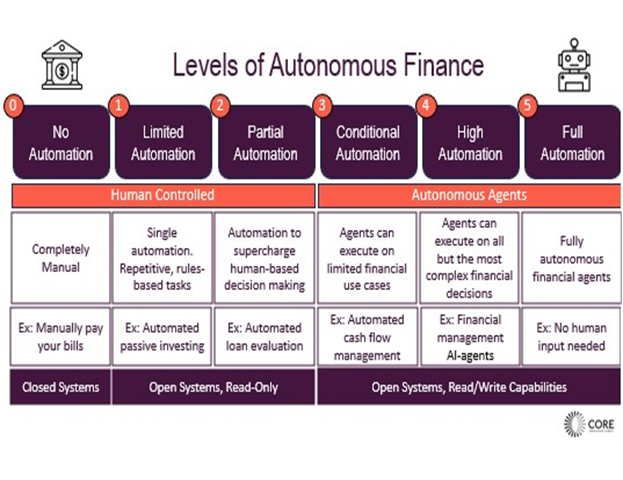When my grandma started asking me how to buy bitcoin and my little cousin showed off her Coinbase account, it was tough to ignore. The gains from investing in cryptocurrency have caught everyone’s attention over the past year. And it spans beyond the dinner table. Elon Musk on SNL, Mark Cuban with the Mavericks, Jack Dorsey on Twitter. Even boomer technology companies like Morgan Stanley and BNY Mellon have legitimized cryptocurrency by creating crypto-based wealth management practices.
During this time, decentralized finance, or “DeFi,” has taken massive strides from obscure to, well, slightly less obscure. DeFi utilizes distributed ledger technology (e.g., blockchain) to create an entirely new network-based financial ecosystem. In this new system, thousands of distributed nodes (e.g. computers) across the world are used to validate transactions. As such, DeFi is often seen as the antithesis to banks, card networks, and other aspects of the traditional financial system where centralized institutions have control (and, in the minds of DeFi enthusiasts, waste trillions of dollars with middlemen and were a major cause of the Great Recession and other economic maladies). While bitcoin is mainly just a currency, or store-of-value, DeFi goes a step further, aiming for a world free of centrally orchestrated financial rules and regulations.
That world doesn’t exist (completely). Yet, there is not enough talk about what the future of DeFi — a future where DeFi and traditional institutions work together — can look like. In my opinion, DeFi and the traditional financial system can partner to bring new innovations to the mass market, building a safer, faster, and more economical financial system.

What recent tailwinds make DeFi believable?
Beyond institutional buy-in of cryptocurrency, four other technological advancements and macro trends have made DeFi come to life.
- The supply of stablecoins has skyrocketed, passing $100 billion in May 2021. Stablecoins are digital currencies backed by non-digital assets, typically fiat currencies or government-issued currencies. These stablecoins offer price stability relative to the volatile cryptocurrency market. The most popular stablecoin, USDC, is backed by the U.S. Dollar, giving users faith in the stablecoin’s value and protection against a catastrophic event.
- In our world of low to negative yields, DeFi offers relatively gigantic yields. DeFi protocols offer 5–20+% yields to depositors vs. traditional banks that offer 0.1%. These higher yields are powered by borrowers who use digital assets to speculate on new tokens, take advantage of arbitrage opportunities, or (less frequently) find liquidity in exchange for their digital assets. These yields are nowhere near risk free (i.e., not FDIC insured) and are not sustainable in the long run. However, as demand for new tokens (and the benefits that come with them) persist, these yields are likely to stay higher than traditional yields for the short-to-medium term.
- The growth of a new universe, the “metaverse,” as crazy as that may sound. The metaverse is a fully digital world where brand new economies exist — personal belongings are NFTs (non-fungible tokens), currencies are digital tokens, and social belonging takes shape in digital-only communities. The metaverse is exploding in popularity with gamers and Gen Z consumers, who increasingly find belonging on the internet. For example, Axie Infinity, a game built on the Ethereum blockchain, expects to grow from around $0 in revenue last year to $1.1 billion in revenue this year!
- The initial on/off ramps from crypto to fiat currencies have been built. As such, it is increasingly easier to move back and forth between fiat currencies and crypto currencies. As an example, FTX, a decentralized exchange, partnered with Visa to power the first crypto card, letting consumers pay for goods without transferring crypto to a bank account. This is the exact hybrid model that is critical for mainstream adoption and one that DeFi optimists should champion.
As of now, the most successful DeFi use cases have been in speculative trading, dominated by young male crypto-enthusiasts. DeFi has yet to cross the chasm into the mainstream, but with recent developments, that could soon change.
Traditional stakeholders will continue to buy-in
So where do we go from here? The key to mass market adoption is embracing the role of each player in the ecosystem, and pairing their capabilities with DeFi. Only then can we take advantage of both this exciting new technology and centuries of financial-system learnings.
Card Networks
Visa and Mastercard dominate payments networks, but digital ledger technology has created payment rails that can bypass the card networks. For the vast majority of transactions, I believe that will never happen. The ubiquity that card networks provide is too valuable. Since building a new payment network from scratch has a low probability of success, card networks can provide valuable on/off ramps for crypto, while retaining their marginally low interchange fees relative to banks. Furthermore, as ecommerce expands and the “metaverse” increases digital spending, card networks will want to increase their addressable market and facilitate money movement between the world on the internet and the real world.
I expect Mastercard and Visa to continue their buying spree over the next decade. And beyond acquisitions, card networks will disrupt themselves before others disrupt them, as the saying goes. It’s happening already. Visa settled its first stablecoin based transaction earlier this summer with their own Ethereum wallet. When a customer used the card, the wallet sent USDC stablecoin to Visa’s ethereum wallet, while Visa simultaneously settled with the merchant in fiat currency. By settling in USDC, the merchant bypassed interchange fees associated with the issuing bank (>1.5%) and was only charged the network fee (around .05%). Moreover, the consumer avoided the risk of traditional banking fees, such as overdraft fees. This reduced cost is only the beginning. There is potential for cheaper real-time transactions that maintain security and utilize the trust and ubiquity already built by Visa. Card networks will pour millions into making sure blockchain is a core feature of their platform.
Banks
Banks will undoubtedly have a tougher time in the world of DeFi. After all, crypto was created in response to general mistrust of the banking system. And while DeFi will eventually be regulated, it will take time before it has the same level of oversight that traditional banks must comply with. Still, banks will serve a purpose and have the opportunity to reap the benefits in a DeFi world.
Interest income is the largest portion of banking revenue. As more and more assets are held in digital currencies, the most progressive banks will accept these currencies as collateral on USD loans and realize their role as liquidity providers. In this way, banks can earn lending fees in a potentially low-risk, collateralized manner.
Custody, the holding of assets, will still require centralized entities, as consumers and institutions trust centralized custody more than self-custody. While blockchain was initially created because of lack of trust in banks by bitcoin maximalists, a majority of consumers still trust their bank with their assets more than any other institution. Embracing centralized institutions’ role in custody will build confidence in the ecosystem.
Finally, for the largest banks, global asset management is a $331B industry and managing money in the crypto space provides an opportunity to increase the total addressable market and one some banks are already pursuing. JP Morgan, after decrying bitcoin as fraudulent for years, launched an in-house bitcoin fund. Goldman launched a DeFi ETF, and while this first attempt was a flop, there’s more to come.
Regulators
If the last month has taught us anything, it is that the question is not if policy makers will regulate DeFi, but how will they regulate DeFi. Regulators are starting to take a more aggressive approach. Congress made the initial steps towards tax related crypto regulation, but fell short of what crypto holders desired. Furthermore, SEC Chair Ginsler has increased his focus on crypto exchanges and requested additional crypto oversight to crack down on fraudulent behavior. He recently took a harsh stance stating that Coinbase’s new lending product must be registered as a security, a burdensome task. Fed Chair Powell has said that the greatest reason to create a central bank digital currency (CBDC), i.e. one controlled by the Fed, is that there wouldn’t be a need for other digital currencies.
This news isn’t good news for everyone, particularly fraudsters and deep crypto enthusiasts that believe DeFi should remain regulation free. But in the long run, more clarity will give DeFi developers the ability to build within the guidelines and in turn increase consumer confidence and participation.
Regulator’s first step will be to ensure DeFi is compliant with anti-money laundering (AML) rules, travel rule compliance, and tax laws. It will require more KYC (know-your-customer) and identity mapping than crypto firms have traditionally been comfortable with. Next, regulators will play a critical role in deciding which parts of DeFi require a banking charter, a broker-dealer license, adherence to accredited investor rules (Reg D), compliance to crowdfunding regulation, or entirely new crypto-specific regulation (such as Wyoming’s Decentralized Autonomous Organization, DAO, legislation).
Just as the government and entrepreneurs came together in the production of semiconductors or the internet, my hope is that regulators and entrepreneurs will work together to innovate our banking system. It will be a rocky road. But working with regulators can take much of the systemic risk out of the system and, in doing so, DeFi will explode in popularity.
Businesses
While retail traders have thus far been the main users of DeFi, there are plenty of reasons for businesses to get involved.
Businesses entirely bear the brunt of interchange, as card transactions average over 1.5% in fees per transaction. Settlement of funds can take 3+ days, a critical delay when cash flow is essential for a healthy business. Stablecoins, or other forms of digital currency, could hypothetically create faster, real time settlement without the burdensome banking interchange fees. Programmable money, or smart contracts, have the ability to change business models, automate backend tasks and free up both time and cash. Additionally, holding a portion of cash in high yield savings accounts can derisk inflation.
Businesses will be the next major user of DeFi, especially once regulation is more defined.
What’s next
Without continued stakeholder buy-in, DeFi will remain on the fringes. But massive strides are needed to turn this challenge into a reality. Risk in the system is way too high for all but the most risk-loving consumers. Learning about DeFi feels like learning a new language, not easy. User experience still has been deprioritized in favor of functionality. And with massive growth, we’ll need more scalable blockchain infrastructure. My next blog will dive into the specific solutions that we at Core are most excited to invest in.




